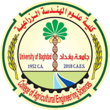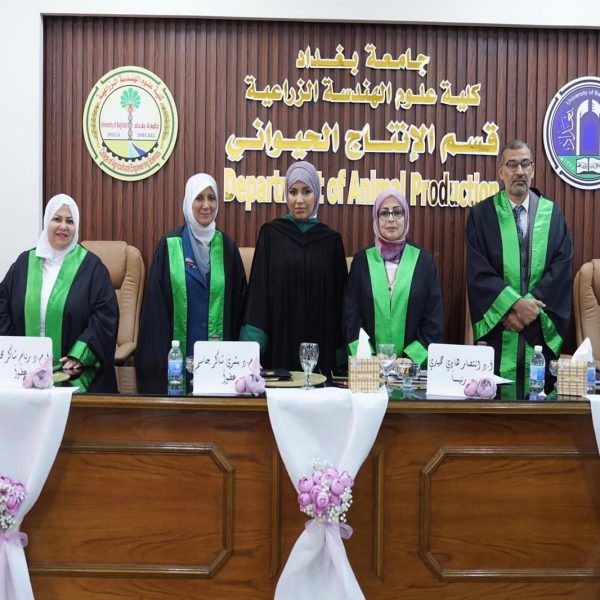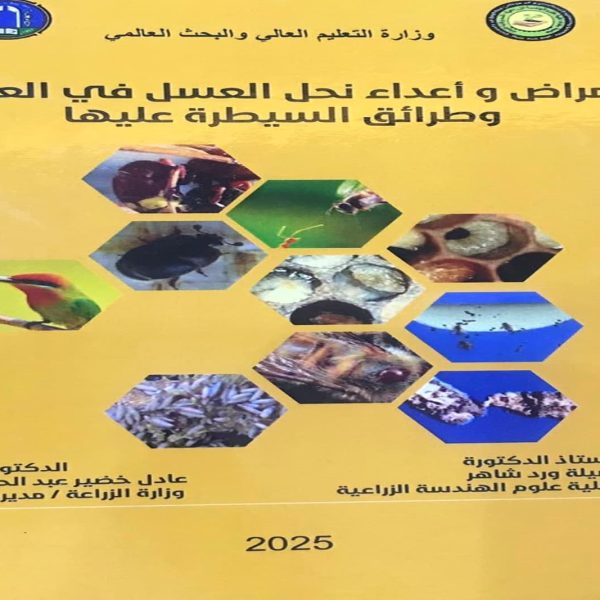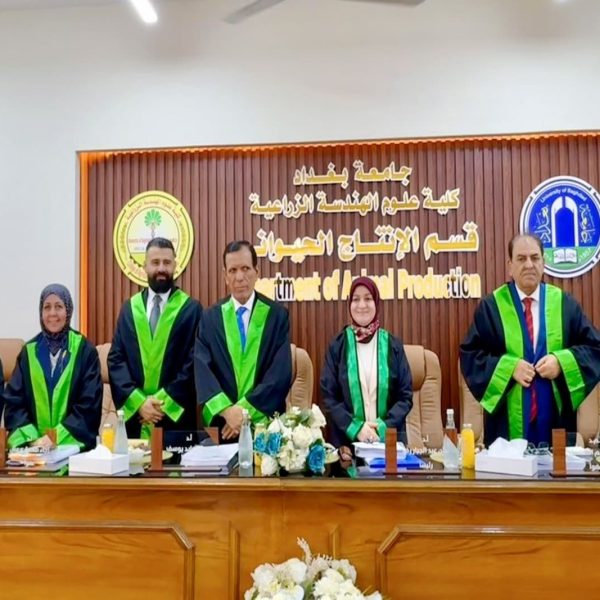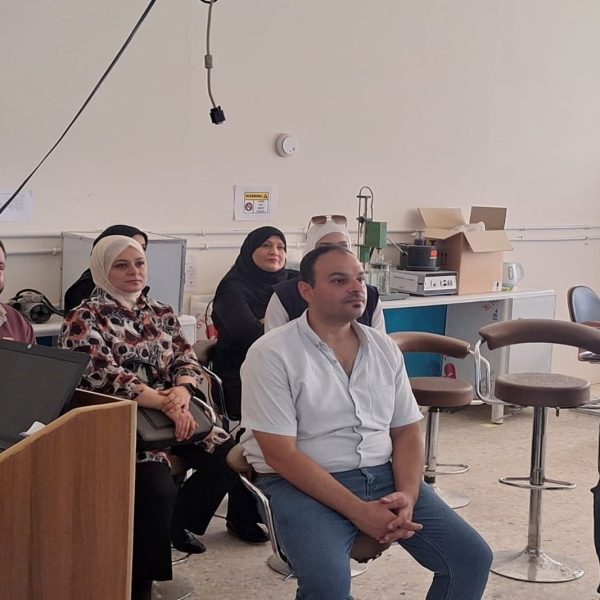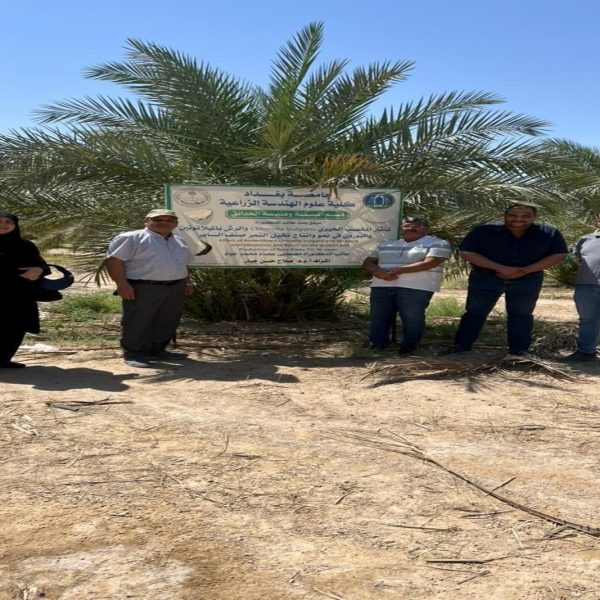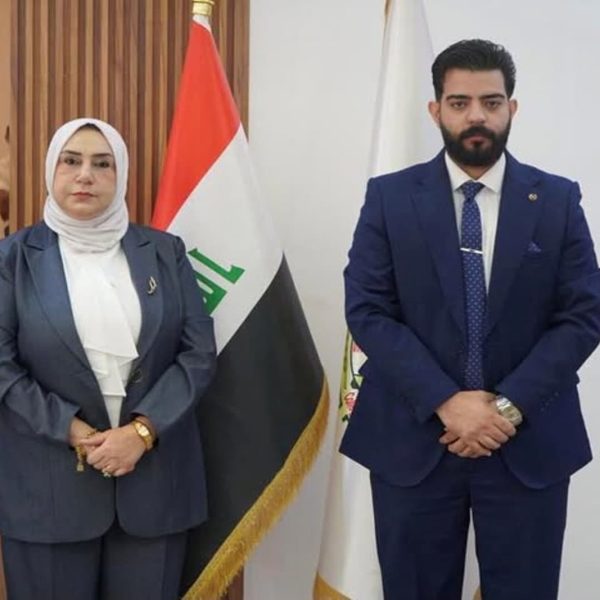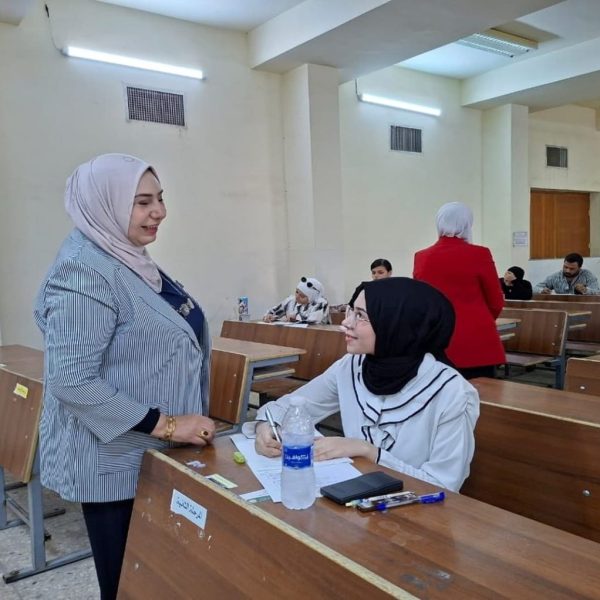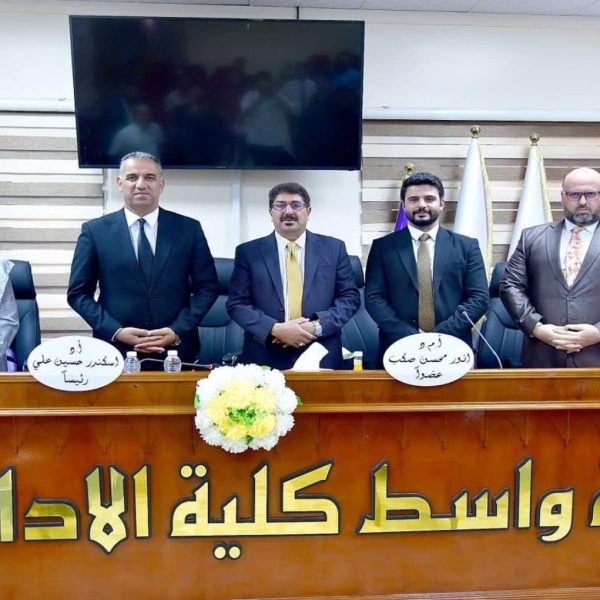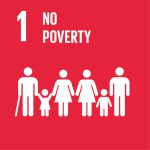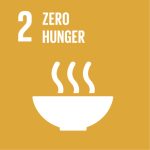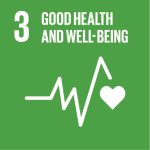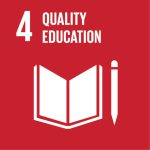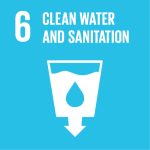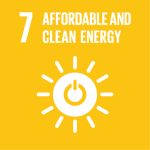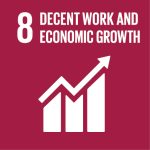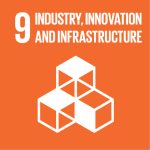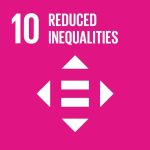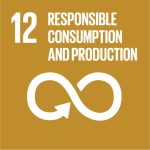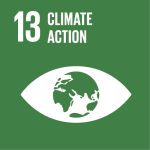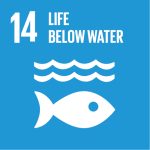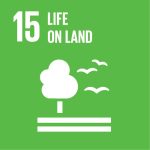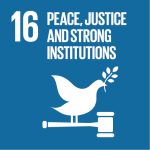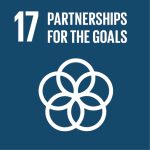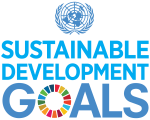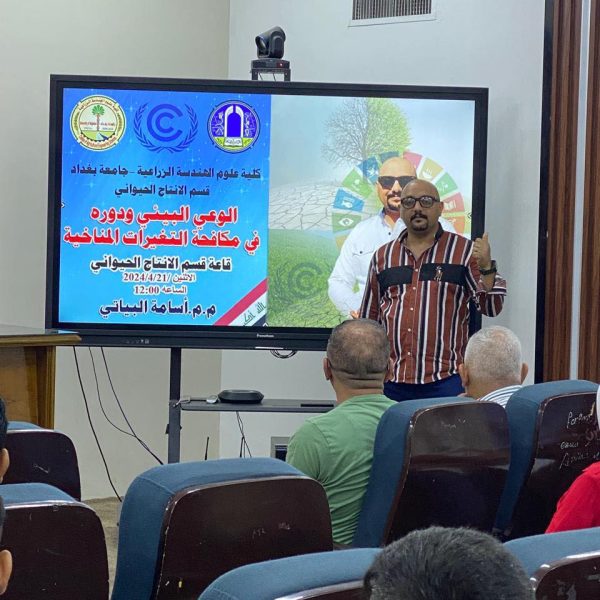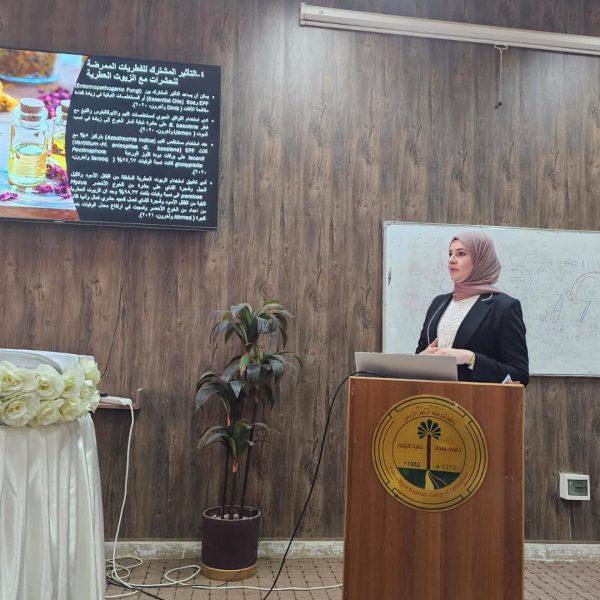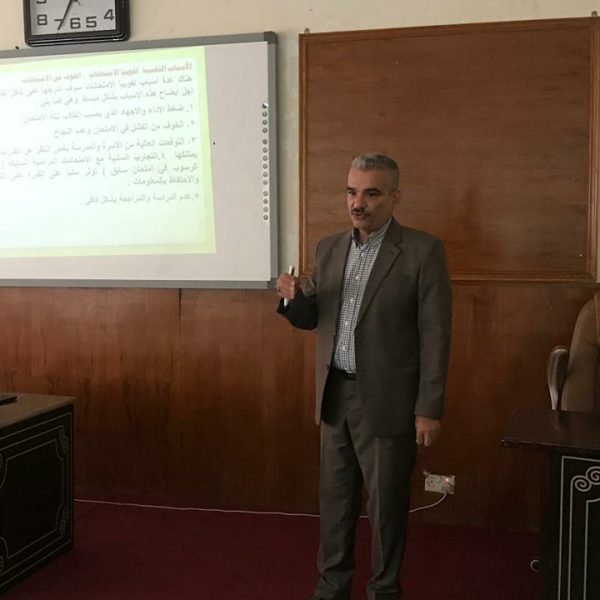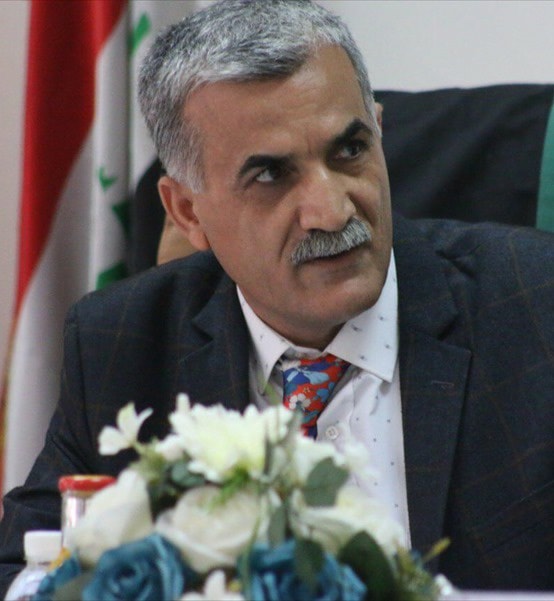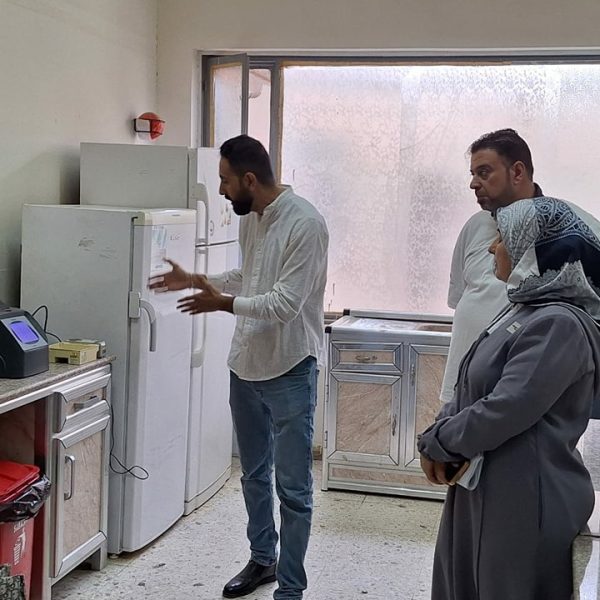Latest Environment and Sustainability News
College of Agricultural Engineering, Environment and Sustainability
The College of Agricultural Engineering Sciences at the University of Baghdad is deeply rooted in history, with a rich heritage and a strong tradition of scientific achievements. It was established in the 1950s in the Abu Ghraib region with a simple teaching staff, consisting initially of only two departments: the Plant Production Department and the Animal Production Department. At that time, most of its teaching staff were foreigners of various nationalities.
The role of the College of Agricultural Engineering Sciences in sustainable development is significant, as the majority of its research revolves around the environment and sustainability. It offers approximately 64 curricula, encompassing more than 100 terms related to the environment and sustainability. The college also organizes exhibitions, seminars, and workshops that serve the 17 Sustainable Development Goals. Additionally, there are volunteer campaigns to support the underprivileged, visits to orphanages, elderly care facilities, and cancer patients.
The college has a platform named “Food and Drug Channel” that is followed by thousands of people. It conducts voluntary campaigns to plant trees in schools, colleges, and universities, as well as campaigns to disinfect the college, university, and school buildings during the COVID-19 pandemic. The college has a future plan that will be implemented in line with the goals of sustainable development.
Moreover, the technological sittings affiliated with the college play a vital role in serving sustainable development, including projects such as the Million Tree Project, the Mushroom Project, the Stevia Project, and the Medicinal Plants Production Project.
Institutions official climate action or environmental sustainability strategy
Climate change is a global challenge that has no limits and its fight requires coordinated action by all countries. The main cause of climate change is global warming, which has many negative effects on physical, biological and human systems, as well as other effects. Global warming is caused by global warming, a natural process by which the atmosphere retains some of the sun’s heat, allowing the Earth to maintain the conditions necessary to host life. Without the greenhouse effect, the average temperature of the planet would be -180 degrees Celsius. The problem is that daily human activities amplify the effect of global warming, causing the planet to warm even more. Among the most important causes of global warming is an increase in greenhouse gases, deforestation, destruction of marine ecosystems, and population increase. Experts agree that the industrial revolution was the turning point when greenhouse gas emissions entering the atmosphere began to rise and the industrial revolution itself was caused by revolutions Smaller, agriculture, technology, demographics, transportation, and finance create a new model of production and consumption.
First, it is important to be clear that climate change cannot be avoided, its effects can be mitigated and its consequences can be mitigated, i.e. we can combat it by implementing small and large scale measures that help slow climate change, these actions are known as climate change mitigation and adaptation measures. The Intergovernmental Panel on Climate Change (IPCC) Special Report on Global Warming highlights the climate impacts of the current 1°C global warming as well as the risks and irreversible losses that may occur at 1.5°C. 2°C temperature or more warming. We need political leadership to cut emissions immediately across all sectors of the economy, in order to limit warming to 1.5°C.
Within the international directives and the participation of the world environmental challenges and the importance of planting trees as one of the most successful solutions to limit climate change and within the activities of the project of the Ministry of Higher Education and Scientific Research in the Department of Research and Development The project of planting one million trees and the activity of the University of Baghdad College of Agricultural Engineering and the activity of the agricultural division in the university office within 22 universities An Iraqi participant in the project was launched today at the University of Baghdad and under the sponsorship of the university president, Prof. Dr. Munir Hamid Al-Saadi, the first campaign to plant trees and shrubs produced at the university with types of trees and shrubs produced in the nurseries of the Agricultural Division and the College of Agricultural Engineering Sciences, in addition to a boost to the productivity of the project in the College of Agriculture at the University of Muthanna.
Where a group of seedlings were planted at the site of the dean’s garden and at the entrance to the University of Baghdad as a first step followed by steps that include garden designs by a specialized team from the faculties of architecture and agricultural sciences affiliated to the designs axis in the project to plant a million trees in order to improve the state of Baghdad University gardens and from In order to implement the slogan raised by the project management and according to the directives of our esteemed ministry (Iraqi universities are green spaces and carbon traps to achieve the vision of Iraq 2030 towards a sustainable environment and a green Iraq).Where the Dean of the College, Prof. Kazem Deli Hassan, supervised the effectiveness of afforestation and the participation of the head of the project committee in the college, Prof. Dr. Hassan Ali Abdel Reda, the former Dean of the Faculty of Agricultural Engineering, Prof. Dr. Shaker Al-Attar, the head of the Agricultural Division at the university, and a representative of quality assurance at the university and graduate students in the Department Combating desertification and a group of teachers, in the presence of the representative of the ministry and the project manager, Dr. Afaq Ibrahim Juma.The next step, God willing, will be to plant types of seeds in the nurseries of the Municipality of Baghdad, as part of collective work, in the service of our dear capital.
As for sustainable agriculture and genetic characterization projects
The first project / production of horticultural crops under the hydroponics system using the nutrient solution film NFT axis
-
This project aims at the possibility of cultivating and producing horticultural crops under the hydroponic system NFT axis and rationalizing water and fertilizer consumption by reusing the solutions resulting from hydroponics in irrigating cultivated fields and increasing production / m-3 of the nutrient solution
The second project/ Propagation of potato tubers using Aquaculture water and nutrients
The importance of the potato tubers propagation project
Recycling the water of aquaculture and using it with the micro-elements in the propagation of virus-free potato tubers, as the aquaculture system is a rich source of nutrients in addition to its content of hormones as well as an environmentally friendly system because it is free of pesticides that cause cancerous diseases as well as saving in the quantities used in watering plants
The third project: the production of leafy plants by adding fish tank water and Champlan extract
The importance of the project:Recycling the water of fish ponds (earth ponds in particular) and exploiting river jungles in the cultivation of vegetable crops, reducing salinization of lands as a result of their disposal, and benefiting from river jungles in fertilizing leafy vegetable crops in particular.
Fourth Project /Using DNA Fingerprinting Techniques to Distinguish Date Palm Varieties
Fifth project /Cultivation of fish with rice in Iraq
The rice field provides a suitable and suitable environment for fish farming and is considered the least risky and low risk method in profit and loss accounts compared to other methods of raising fish such as cages or ponds, as well as the possibility of predicting the quantity of rice and fish crops. The construction cost is very simple and has low cost so the farmer has many options regarding the disposal of the property.
The scarcity of water and the increase in demand for it as a result of the development witnessed by the countries of the world in terms of population growth, high standard of living, limited traditional water sources and imbalance between the available quantities of water and the actual demand for it made many of these countries, including Iraq, tend to search for non-traditional water sources that are used in different ways. economical and highly efficient; To achieve economic and social development in the future, especially since water is a strategic and vital element closely linked to this development. One of these sources is the reuse of treated gray water to increase the available water, get rid of gray water and reduce environmental pollution, which relieves pressure on fresh water.
Gray water is the water coming out of washbasins, bathtubs, bathrooms, washing machines and underground drains. Although these toilets are no longer clean, the rate of pollution is much lower than that of sanitation water. Hence the idea of the research came, as gray water can be treated relatively easily in the same production site, and then re-used as a new water source from non-traditional water sources that can be used to irrigate agricultural crops and plants grown in homes, public gardens, parks, etc., and increase the areas of irrigated lands, food security and protection The environment from pollution caused by gray water if it is disposed of inappropriately. It also works to protect the environment in general from pollution resulting from the overflow of cesspits or their discharge into valleys and public streets, as well as protecting ground and surface water sources.
Processing methods
It is possible to set up treatment units in homes, villages, countryside, gardens, public parks, schools, universities and other civil buildings for the purpose of irrigation. The use of gray water is not limited to irrigating plants. For example, gray water is used in some countries to wash health facilities.
Gray water treatment units aim at the following:
-
Reducing the use of fresh water, which costs the consumer an amount of money, which must be paid in exchange for providing him with water and providing a new water source at a low price.
-
Reducing the cost of the water production unit. Many consumers of water depended on drilling wells, which cost a lot of money.
-
Reducing the expenses of getting rid of gray water polluting the environment, as many small population centers do not have public sewage networks, which makes the people compensate for this by making cesspits, which often have many negatives, especially as they need to be constantly emptied, This is considered expensive to some extent due to the high cost of emptying, and therefore most families leave these pits to fill up and become a health problem for everyone from smells, insects and diseases. As for large cities, there are public sewage networks, but they also suffer from many problems due to the age of these networks that It needs to be checked and maintained periodically. From here, we find that the wastewater has to be disposed of.
-
The use of appropriate treated wastewater helps to dispense with some fertilizers that cost a lot of money, as they contain organic materials and some nutrients needed for crops.
Carbon dioxide and methane are among the most important greenhouse gases that have witnessed a remarkable increase in 2020, to become the current proportion of carbon dioxide higher than it was during the past 3.6 million years. Methane is emitted to the atmosphere from many sources, such as the use of fossil fuels and the decomposition of organic matter in wetlands and as a by-product of livestock farming. However, some researchers attribute the increase in methane to the biological activities that produce it, such as wetlands and livestock rather than sources Thermal and industrial related to the production and use of oil and gas. Protecting our planet from the changes that have affected it recently is not easy, and reducing emissions requires more solutions that reduce fossil fuel emissions to close to zero.
In this regard, the university has directed the following projects:
Environmentally friendly bio-organic fertilizer production project
The project aims to produce environmentally friendly nitrogen, phosphate and potash fertilizers from animal and plant waste by collecting the university’s plant and animal waste and converting it into organic and bio fertilizer. Educational and training, especially for graduate students, and encouraging them to carry out such projects after graduation. Various species of bacteria and fungi used in the production of bio fertilizers such as Rhizobium, Azotobacter, blue green algae and Mycorrhiza
Among the projects for the production of environmentally friendly organic fertilizers and the treatment of agricultural waste, as it is possible to manufacture organic fertilizers from the residues of the Conocarpus plant and use them in the growth and production of horticultural plants. Good, free from chemical additives that cause a rise in the level of salt in the soil, as well as improving the quality of the agricultural product by reducing the level of nitrates that negatively affect human health and then benefiting from the pruning residues of these trees and limiting the growth of their roots.
the term Renewable Energy expresses the energy that results from natural processes, without human intervention, and is permanently renewed. There are several types in nature, such as sunlight, geothermal energy, wind, sea waves, running water energy or falling from slopes, in addition to biomass energy in its various forms. One of the most important advantages of renewable energy is that it is impermeable and free, in addition to being clean energy. As for the concept of alternative energy, it expresses any energy source that can be used as an alternative to fossil fuels, and it is often non-conventional energy sources that do not affect nature as much as burning fossil fuels.
The following are the most important projects that the university is interested in in this field:
Manufacture and assembly of a pumping unit with a motor that operates with four energy sources used in irrigation
The objective of the project: The study of the operating costs of agricultural equipment and pumps aims to obtain high operating efficiency and productivity at the lowest possible costs. Pumping systems that operate with diesel fuel need to calculate the costs of fuel and maintenance, and with the increase in the load on the diesel engine, the costs of fuel and maintenance increase with it. On the contrary, if Renewable energy systems represented by solar energy and wind energy do not need continuous maintenance, which makes them suitable for remote areas far from electricity supply centers where technicians are not available to maintain and repair diesel engines, and in addition to the above, it is clean and environmentally friendly energy.
And in order not to give the opportunity to farmers’ reluctance to operate the pumping unit in drip irrigation systems or sprinkler systems in desert areas when there is no national electricity or fuel is not available, we find it necessary to think about finding alternatives to energy, which are called renewable energy, and providing arable lands in remote areas and far from sources Electricity, which provides job opportunities and increases local production.
The second project: a smart irrigation system using the Internet of Things and solar energy
o This research proposes an intelligent irrigation system using the Internet of Things that can be used to control the irrigation of plants.
o The level of water in the soil is detected by soil moisture using a soil moisture sensor type with measuring humidity and ambient temperature using in order to track early signs of temperature changes. These sensors are connected to a Wi-Fi panel. The collected data is uploaded to the cloud (esp32.com) and viewed by an app or website.
o Notifications are sent to the user constantly to make the system easy to use.
o It relies on the solar energy system as one of the clean and sustainable energy sources. Avoid pollution resulting from the use of diesel pumps or other forms of energy.
o Reducing water waste and preserving water resources from bad use in irrigating plants so that the process is fully automated and intelligently via the Internet.
o The system controls the process of watering plants automatically, reducing the need for human intervention to a large extent.
o The proposed system contributes to saving time, reducing cost, protecting the environment, reducing maintenance and operating costs and effective irrigation service.
The third project is a refrigerated store for preserving fruits and vegetables that operates on solar energy
It aims at the possibility of benefiting from the project to apply the research of postgraduate students, masters and doctorate (for the Agricultural Machinery Department and the rest of the students for other departments), and an educational model for the study of agricultural buildings and renewable energies.
Illustrative image of the proposed project showing the solar cells and the two cold storages (on the right we use a radiator, and on the left a refrigeration device)
Poverty eradication
First goal
Introduction
Our College
It plays an important role in achieving the first goal of the Sustainable Development Goals, which is to eradicate poverty through:
1-Education and training: Providing the necessary education and training to develop individuals’ agricultural skills and knowledge, providing them with better opportunities to work in the agricultural sector, thus improving income and reducing poverty.
2- Scientific research: Conducting scientific research that helps develop new agricultural technologies and methods that increase productivity and reduce agricultural costs, which contributes to increasing farmers’ income and improving their livelihoods.
3- Enhancing food security: Increasing agricultural production through sustainable agricultural practices contributes to achieving food security, which is a key factor in reducing poverty, as food shortages lead to poverty and hunger.
Zero hunger
Second goal
Introduction
Our College
1- Enhancing food security through research on increasing crop productivity and improving farming and irrigation techniques, which helps meet the needs of the growing population.
2- Cooperation with agricultural departments and companies and providing scientific solutions that contribute to achieving food security.
Good health and well-being
Third goal
Introduction
The world is currently facing an unprecedented global health crisis – due to COVID-19 human suffering is rampant, the global economy is being destabilized and the lives of billions of people around the world are turned upside down source
Our College
1- Studying and developing food crops rich in essential nutrients contributes to improving individuals’ health. It also examines the impact of agricultural methods on public health.
2- Improving nutrition through the Department of Food Sciences research, which specializes in improving human nutrition.
Quality education
Fourth goal
Introduction
Our College
The Faculty of Agricultural Engineering Sciences contributes to the dissemination of agricultural knowledge and the provision of educational programs to qualify specialists and farmers on sustainable agricultural methods and the use of agricultural development curricula such as smart agriculture and sustainable intensification of crop production, as well as qualifying many graduates to work with farmers and develop agricultural work, and this is what the FAO confirmed as farmers as natural leaders through whom food security is achieved.
Gender equality
Fifth goal
Introduction
Our College
The Faculty of Agricultural Engineering Sciences supports women’s empowerment in the agricultural sector and provides educational and training opportunities for women, helping to enhance their participation in rural development.
Clean Water & Hygiene
Sixth goal
Introduction
Our College
Agricultural research in scientific departments focuses on the efficient use of water resources, sustainable irrigation techniques, and the development of water management solutions in the agricultural sector, especially in light of water scarcity and deteriorating quality.
Clean and affordable energy
Seventh goal
Introduction
Our College
The College contributes to achieving this goal through several key roles, including:
- Research and development in the field of bioenergy: The college departments are working on developing techniques and methods to produce bioenergy from agricultural waste, such as biofuels from crop residues or plants that can be grown specifically for this purpose. This contributes to reducing dependence on petroleum fuels and providing renewable energy sources.
- Recycling agricultural waste: The college conducts research on converting agricultural waste into energy sources, which achieves two benefits: disposing of waste in environmentally friendly ways, and providing clean and sustainable energy that can be used in rural areas and farms.
- Educating students and farmers about renewable energy: Providing training and awareness programs for students on the importance of renewable energy and its use in the agricultural sector, such as using solar energy to operate irrigation systems or generate electricity on farms.
- Design of agricultural systems powered by renewable energy: The Department of Agricultural Machinery and Machinery is developing modern agricultural systems based on renewable energy, such as solar irrigation systems or greenhouses that rely on clean energy. These systems reduce the cost of agricultural production and contribute to their sustainability.
- Crop development for bioenergy: Colleges of Agriculture contribute to research on the development of crops dedicated to the production of bioenergy, such as corn, cane and soybeans, that can be used in the production of biofuels, thus contributing to the diversification of sustainable energy sources.
Decent work and economic growth
Eighth goal
Introduction
Sustainable and inclusive economic growth can drive progress, create decent jobs for all and improve living standards. COVID-19 has disrupted billions of people and put the global economy at risk. The IMF predicts a bad global recession like the 2009 recession or worse. As job losses increase, the ILO estimates that nearly half of the global workforce is at risk of losing their livelihoods. source
Our College
The Faculty of Agricultural Engineering Sciences contributes to:
- Creating new job opportunities, especially in rural areas, by supporting agricultural projects and developing entrepreneurial skills.
- Focusing on research on sustainably increasing agricultural productivity and diversifying sources of income for farmers, which means increasing the agricultural sector’s contribution to the GDP.
Industry and innovation
Ninth goal
Introduction
Inclusive and sustainable orientation towards industrialization, combined with innovation and infrastructure, can unleash dynamic and competitive economic forces that generate jobs and income, while playing a key role in introducing and promoting new technologies, facilitating international trade, and enabling the efficient use of resources. source
Our College
Build resilient infrastructure, spur sustainable industrialization and encourage innovation
The college plays an important role in achieving this goal through the development of sustainable agriculture and agricultural infrastructure, through several main axes, including:
- Research and innovation in agricultural technologies: The college contributes to the development of new technologies that enhance the efficiency of agricultural production, such as smart irrigation systems, precision agricultural technology, and modern agricultural machinery. These technologies improve productivity and reduce resource waste.
- Developing sustainable agricultural infrastructure: Scientific departments are working on designing and developing infrastructure solutions suitable for rural areas, such as transportation and storage systems that help transport crops safely and quickly and reduce crop losses, enhancing the sustainability of the agricultural sector.
- Encouraging agricultural industrialization: The college encourages the development of agricultural industries and food processing, which helps to transform agricultural products into value-added commodities, provides job opportunities and contributes to the development of the local economy in agricultural areas.
- 4. Cooperation with agro-industries: The college collaborates with agricultural companies and institutions to conduct joint research, to develop more efficient and sustainable agricultural equipment and tools, such as equipment that reduces energy or water consumption.
- Stimulate agricultural innovation by conducting research and developing innovative solutions, such as drought-resistant crop varieties or growing in non-traditional environments.
- Promotion of environmentally friendly technologies: The college’s research focuses on developing and using environmentally friendly technologies that preserve soil and reduce pollution, thus contributing to building a sustainable agricultural infrastructure that preserves natural resources for future generations.
Reducing inequalities
Tenth Goal
Introduction
Inequality within and between States is a constant cause for concern. Despite some positive signs of a trend towards reducing inequality in some dimensions, such as reducing relative income inequality in some countries and benefiting low-income countries through preferential trade, inequality persists. source
Our College
By supporting rural communities and improving access to resources, the college contributes to reducing the gap between urban and rural areas and between farmers.
Sustainable cities and communities
Eleventh Goal
Introduction
Our College
Making human cities and communities inclusive, safe, resilient and sustainable
- Promotion of urban agriculture: The faculty contributes to spreading the culture of urban agriculture through research and training on rooftop cultivation techniques, balconies and urban gardens and encouraging afforestation. This type of agriculture helps cities improve food security and reduce dependence on remote transportation of food.
- Research into sustainable agriculture techniques within cities: The college develops agricultural techniques suitable for urban spaces, such as vertical farming and hydroponics, that reduce land and water use, contributing to achieving self-sufficiency in cities and contributing to the sustainability of urban communities.
3. Environmental awareness for communities: The college organizes awareness campaigns and programs for communities on the importance of urban agriculture and reducing agricultural waste, and promotes the concept of environmental responsibility within cities.
Responsible consumption and production
Twelfth Goal
Introduction
Our College
Ensure sustainable consumption and production patterns:
- Reducing food waste: The college conducts research on food preservation and storage techniques to reduce food waste, and provides agricultural solutions that reduce agricultural production losses during the harvesting and distribution process.
- Encouraging sustainable agricultural practices: The college offers integrated curricula on sustainable farming methods, such as organic farming and soil-conservation farming techniques, which reduce the environmental impact of agricultural activities and ensure sustainable food production.
- Recycling and managing agricultural waste: Scientific departments are working to recycle and turn agricultural waste into useful products, such as converting crop residues into organic fertilizer, which reduces pollution and enhances sustainability in agricultural production.
Climate action
Thirteenth Goal
Introduction
Our College
Contribute to adaptation to climate change through research on agricultural techniques that are resistant to climate change and promote sustainable agriculture that reduces carbon emissions and mitigates the effects of climate change.
Life underwater
Fourteenth Goal
Introduction
Our College
- Research in sustainable agriculture techniques: The scientific departments of the college conduct research on farming techniques that reduce the use of chemical fertilizers and pesticides, which can seep into the water and pollute it. Promoting these techniques can reduce chemical pollution that negatively affects ecosystems.
- Reducing the flow of chemicals: The college is working on developing agricultural methods and techniques to reduce the flow of agricultural water loaded with chemicals and nitrogen to rivers, such as conservation agriculture that preserves the soil and prevents erosion, which reduces the access of harmful substances to the water.
- Promoting organic agriculture: The college encourages organic agriculture as an alternative to traditional agriculture that relies on fertilizers and chemical pesticides. This reduces the risk of water pollution from the leakage of these materials and contributes to the protection of marine resources.
- Recycling of agricultural waste: The college’s research focuses on ways to recycle agricultural waste or convert it into organic fertilizer, which reduces the amount of agricultural waste that can reach fresh or marine water and lead to pollution.
- Promoting sustainable aquaculture: The college offers study programs and research on sustainable hydroponics and fish farming in controlled environments, which contribute to reducing pressure on natural marine resources and offer a sustainable alternative to fishing.
Life on Land
Fifteenth Goal
Introduction
Our College
It contributes to protecting biodiversity and improving sustainable land use practices by developing agricultural methods that conserve soil and ecosystems, such as hydroponics, organic farming, and no-till farming.
Peace and Justice
Sixteenth Goal
Introduction
Our College
- Contribute to achieving food security: Sustainable agriculture is an important factor in achieving food security, which in turn reduces conflicts and promotes social stability. Through its educational and research programs, sustainable agriculture contributes to the development of techniques and methods to increase food production and equitable distribution.
- Promoting social justice in rural areas: Contributes to supporting farmers, especially marginalized groups and small farmers, through training programs and workshops, which promotes social and economic justice in rural communities and contributes to poverty reduction.
- Awareness of environmental rights: The college promotes awareness of the importance of protecting the environment and preserving natural resources. This awareness is part of building peaceful societies that respect the rights of individuals in a clean and sustainable environment.
- Leadership capacity building and partnerships: The college departments train students in critical thinking and teamwork, which helps them build effective and fair institutions when they enter the labour market. The college also contributes to building partnerships with governmental and non-governmental institutions, which promotes sustainable governance in the agricultural sector.
Partnerships to achieve goals
Seventeenth Goal
Introduction
A successful development agenda requires inclusive partnerships – at the global, regional, national and local levels – based on principles and values, and on a shared vision and shared goals that put people and planet at the centre of their concern. Many countries need official development assistance to encourage growth and trade. However, aid levels were falling and donor States had not fulfilled their pledge to increase financing for development. source
Our College
- Cooperation with other research institutions and universities: The college promotes scientific cooperation with local and international universities, which contributes to developing sustainable agricultural methods and applying new agricultural practices.
- Developing partnerships with the public and private sectors: The college contributes to establishing partnerships with government agencies and private companies to support sustainable agricultural development. This includes supporting small-scale agricultural enterprises, achieving food security, and devising new ways to improve productivity.
- Participation in international conferences and workshops: Participating in international conferences and workshops to exchange knowledge and experiences helps transfer successful experiences and apply them in different environments.
